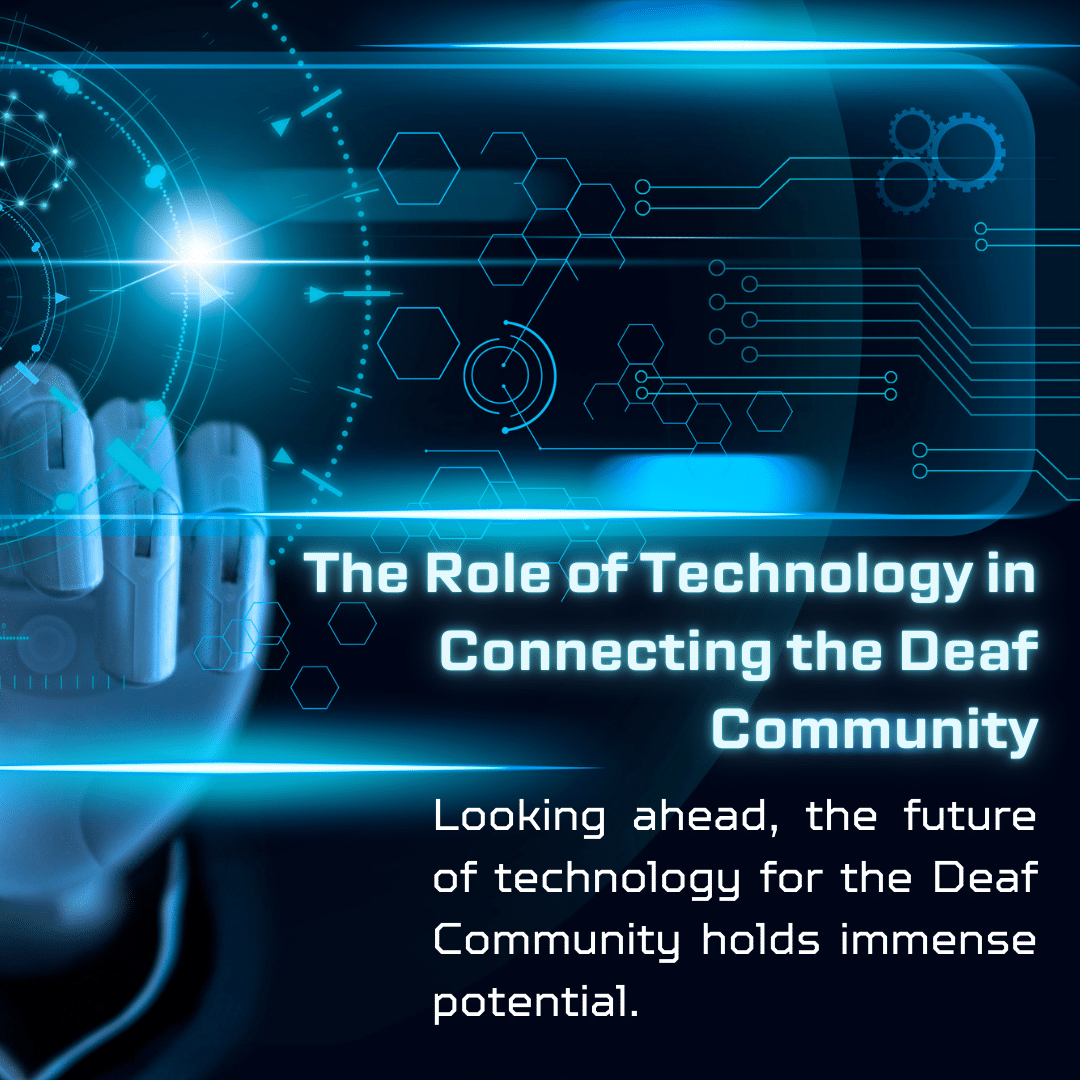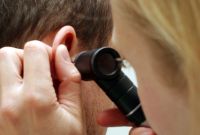
The Hearing Test and Why Deaf People Hate It
While a hearing test seems like a normal part of having a baby, it is also a source of oppression for many deaf people. In this article, I will describe the procedures for testing hearing, and then share with you why deaf people find them oppressive.
The Hearing Test for Infants
Newborn infant hearing tests are used to identify a hearing loss in infants right after birth. There are now screening protocols that have been implemented in hospitals and birthing clinics. Approximately 95% of the hearing tests are done before the baby leaves the hospital.
The hearing tests that are used are usually either an auditory brainstem response (ABR) or the otoacoustic emission (OAE).
The ABR tests for hearing and brain functioning. This test uses electrodes that are taped behind the baby’s ears and on its forehead. These electrodes measure the baby’s brain activity in response to clicking sounds.
The OAE tests for the acoustic response produced by the cochlea. This test uses a small probe that contains a microphone and speaker that is inserted into the baby’s ear. Sounds are generated by the probe and the cochlea’s responses are recorded.
Before the baby is discharged, it has its hearing tested using one (or both) of the above methods. If the baby does not pass, they usually test again. If the baby still does not pass, it is referred to a specialist for more testing (typically an audiologist).
The Hearing Test for Children and Adults
When you first see an audiologist for a hearing test, your medical history involving hearing loss is assessed. The audiologist will ask you questions to see if you are at risk for hearing loss or have already experienced some loss.
You may be asked if you’ve experienced difficulty hearing, if you have a family history of hearing loss, what noise levels you’ve been exposed to, if you’ve taken any medications that may affect your hearing, etc.

The audiologist will then examine the inside of your ear with an otoscope to see if there is anything noticeably wrong with your ear canal or eardrum. A pure tone test may be used to determine the threshold at which you can hear different frequencies of sound. You will need to wear earplugs or headphones during this test. The audiologist then uses an audiometer that plays several tones at different pitches and intensities. You will hear these tones through your earplugs or headphones. The pitch is measured in Hertz (Hz) and the intensity is measured in decibels (dB). The audiologist will tell you to either raise your hand or push a button when you hear a tone.
A speech test may be used to determine how well you can hear speech. This test uses a speech recognition threshold (SRT) and a word recognition score. The SRT determines the lowest level you can hear speech at least half the time. For the SRT part, the audiologist will tell you to repeat the words you hear. Words will have either one or two syllables and become quieter and louder during the test.
The word recognition part is similar to the SRT, but all the words have one syllable and are played at a comfortable loudness (sometimes with background noise). This test tells the audiologist how well you understand what you heard.
Your responses to these tests are recorded on an audiogram. An audiogram is a chart that has the frequency numbers running across the top and bottom and a range from high to low tones (125 Hz to 8,000 Hz). The numbers running down the side of the audiogram show the hearing level. Marks near the top of the audiogram mean better hearing, while marks near the bottom mean poorer hearing.
After you are determined to have a hearing loss, there are several options the doctors give you. All of the options given usually do not include anything to do with Deaf Culture or American Sign Language.
The Problem
At this point, a hearing test would seem fine to the average person. However, there is a significant amount of oppression happening here.
In regard to the infants, the new babies are tested so that hearing parents will know in advance that their child is deaf.
But…think about this scenario:
A deaf mother and father just gave birth to their first child. They were both born deaf themselves, so they are pretty positive their child will be deaf as well.
The child still goes through the hearing test. The nurse comes back to the couple, looking distraught, and says the baby did not pass the test. They are not surprised, and the mother reaches out her arms for her baby.
The nurse pulls back and says they need to test again. The mother and father look at each other like our baby is deaf, why do they need to test again? Again, the nurse comes back saying the baby failed, and that the parents will need to see a specialist.
The parents don’t think they need to see a specialist…their baby is deaf, so what? The parents end up getting phone calls and letters in the mail from child services saying that they need to see the specialist for their baby, and they have failed to do so.
So, the parents finally see the specialist, and of course, their baby does not pass the tests. As required by law, the parents of a deaf baby are then required to attend classes in regard to the raising of their deaf child.
So, what is wrong with that story? Several things:
First, the medical field sees deafness as a bad thing–a handicap that needs to be fixed. So, the nurse comes out looking distraught saying the baby did not “pass” the test. To the deaf parents, the baby passed the test–he did not “fail.” There is nothing wrong with being deaf. The child’s parents are deaf, and will grow up in a perfectly happy deaf home.
Second, the parents did not request a second hearing test. They were not surprised their baby was deaf, so why subject the child to more testing when it is not even necessary?
Third, the parents are required to see a specialist. They are perfectly happy with their deaf child, why do they need to keep beating this dead horse? However, hearing parents often do not know their child is deaf, so parents of babies who do not pass these tests need to see a specialist to make sure they know. These deaf parents, however, know their child is deaf, and are completely ready to educate and raise the child in the correct environment.
Fourth, because the specialist has determined the child to be deaf, the parents are now required to attend classes to learn how to raise their deaf child. Since when are deaf parents unable to correctly raise their deaf babies? Hearing parents aren’t required to take classes to learn how to raise their hearing children, so why are the deaf required to take these classes?
These classes tend to not educate parents about Deaf Culture or American Sign Language. The options given to the parents of children who have a hearing loss are very limited and label deafness as a problem that needs to be fixed.
The deaf are truly oppressed in this story of a family who has recently experienced the beauty of bringing life into this world. Their poor child is subjected to repeat tests, and being labeled as a “failure.” The parents are also being treated by the government as if they don’t know how to raise their own child.
With regard to the hearing tests of children and adults, you are given a hearing test to determine if you have some degree of hearing loss.
This is great, except for what happens when you are found to have a hearing loss or complete deafness.

The doctors will give you options (and if you are a child, your parents will be given these options). However, these options rarely include Deaf Culture or American Sign Language. Children and/or adults with a hearing loss are recommended to be enrolled in an oral education, to wear hearing aids, or sometimes to get a cochlear implant.
All of these options that are recommended involve integrating the person with a hearing loss into hearing culture and not deaf culture. People with a hearing loss should not be given options that only lead to hearing culture–Deaf Culture should at least be an option for these people as well.
This is a type of oppression that needs to stop. Deaf people have been oppressed throughout Deaf History. At a time when the world is combating racism and prejudice, this should be considered oppression as well.
My goal is to raise awareness of these issues. That way, the next time you find out a friend of yours has a hearing loss, or you visit your neighborhood audiologist, you will know what to look for, and what to bring to their attention.











3 Responses
I’d like to know where is the push for “oral programs” coming from? Include Citations please so we may can share your article with fact-checked and works cited page.
It really helped when you said that frequency numbers play a role in the test you are taking. My aunt is experiencing hearing problems because of her old age and asked if I have any idea what is the best treatment for her. I appreciate you helping me learn more about how consulting a trusted audiology service can help my aunt with her concern.
The ability to deal with this devastating disability in infants and adults gets more difficult without the proper advanced tools and treatment. It’s great that testing on infants, suspected of hearing loss, is an ongoing process. The ABR and the OAE testing methods are so important in regards to an infant’s growth and how he or she adapts.
If heredity comes into play, then there’s not to much the audiologist can do, but base its findings on this conclusion. As a child with this disability, grows up through the years, he will be labeled and treated as being different. Society has a way of being ‘cruel’, as your site has demonstrated. I to, have put together a site touching on this same subject. Thank you for sharing this valuable information.